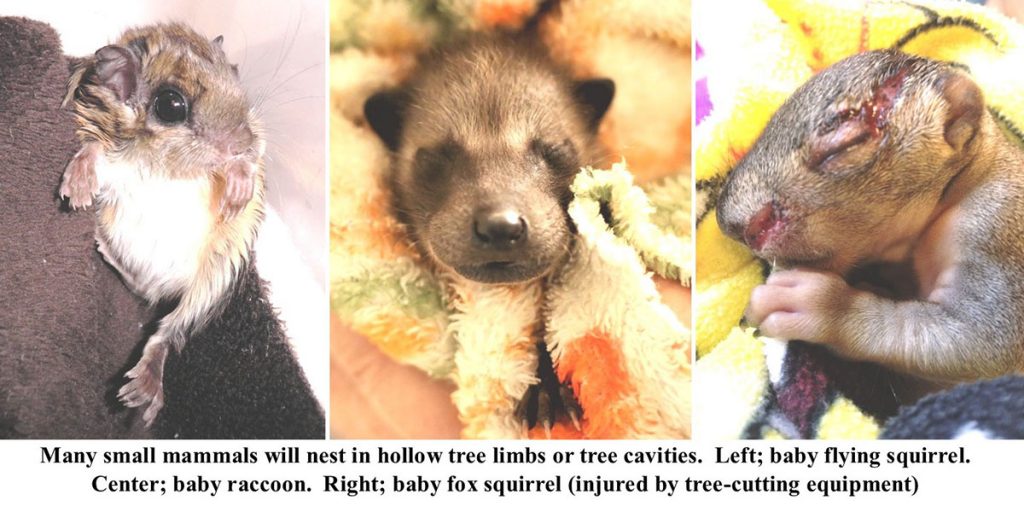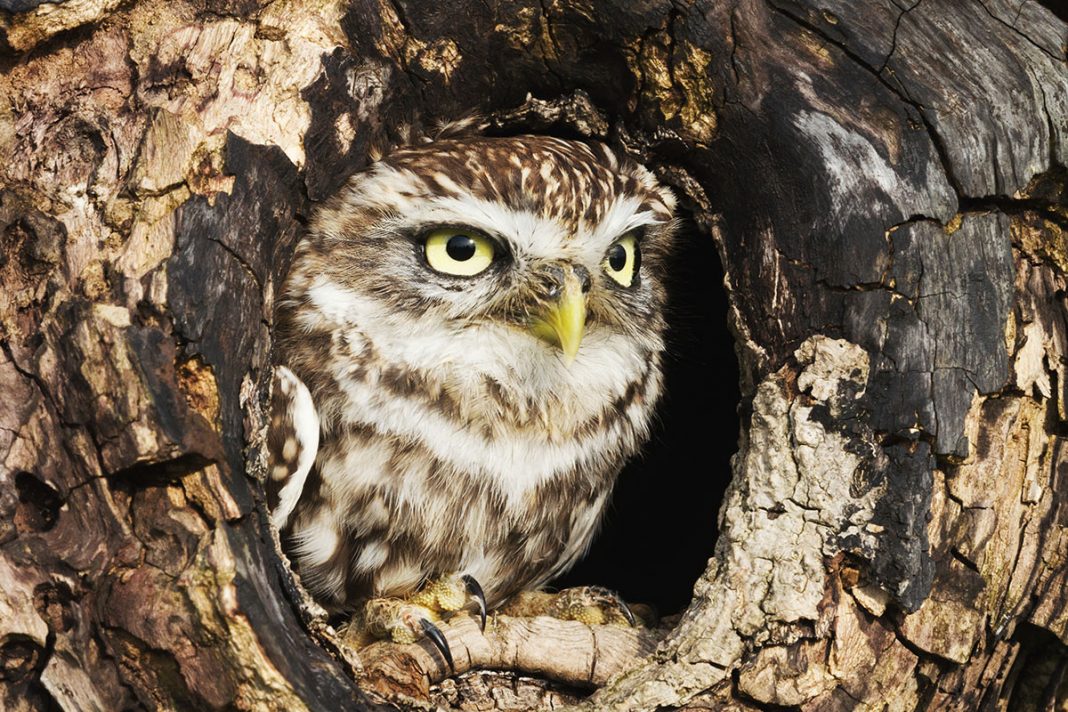Oh no, that tree is dead! We’ve all probably said that at one time or another. Spring arrives, all the trees and plants are budding out and “springing” back to life, but there’s that one tree that just doesn’t come back. The first inclination, of course, is that the tree has got to go. However, leaving dead trees is a vital part of maintaining a healthy environment, as dead trees can truly provide life after death.
The forestry term for a standing dead or partially dead tree is a snag. However, many people are starting to refer to these ghosts as “wildlife trees”. In North America, as many as 85 species of birds, 50 species of mammals, and many, many reptiles and amphibians depend on dead trees for shelter, food, and nesting. Dead trees are, of course, also home or food for many types of invertebrates (such as insects, spiders, worms, and more), which in turn also attract the birds, mammals, reptiles, and amphibians that feed on them. However, by far the greatest benefit dead trees provide to wildlife are cavities, or holes, in branches or trunks. These cavities are vitally important nesting and sheltering sites to many species, such as:

- Many types of birds will only nest in cavities, such as woodpeckers, chickadees, bluebirds, nuthatches, wrens, tree swallows, titmice, kestrels, and wood ducks
- Eastern screech owls, barred owls, barn owls, and great horned owls
- Mammals such as flying squirrels, gray squirrels, fox squirrels, raccoons, bats, porcupines. Even opossums, which are marsupials, will use tree cavities as dens.

Woodpeckers are the primary excavators for drilling cavities into snags. Abandoned woodpecker holes are then used by other species of birds that depend on them for nesting sites. Cavities are also used by frogs, snakes, honeybees, wasps, and spiders. In addition to providing shelter, dead trees or trees with dead limbs are also invaluable to wildlife for other reasons:
- Eagles, hawks, or owls use snags or dead branches when hunting to get a clear view of prey
- Ospreys may nest in larger snags near open water
- Birds that catch insects on the fly (such as flycatchers, smaller hawks, kites, shrikes, kestrels, and small owls) will use snags to launch their aerial attacks
- Snakes use logs from snags for multiple things, such as sheltering, hunting for prey, sunning themselves (for thermoregulation), or hibernating in winter.
- The woodpeckers who depend on snags for nesting also excavate them for insects, which provide them with the food they need for themselves and to raise their young. Some woodpeckers also store food (such as nuts or acorns) in holes they drill into dead trees.
- Salamanders use rotting logs as both shelter and a source of food (insects)
- Many species of fungi grow only on dead wood

In wooded areas, it is thought that to maintain a healthy environment four or five snags should be left per acre. Of course, safety to people and property should be taken into consideration, and it is advisable to seek the advice of a professional arborist in some cases. It is important to assess the feasibility of leaving a dead tree as is, modifying the tree, or having to remove it due to safety concerns. Bear in mind that all dead trees will eventually lose limbs and fall, so retained dead trees should always be periodically reevaluated and trimmed or removed as needed. Not all snags can or should be saved. However, in some cases removing the entire tree may not be necessary.
When assessing a dead tree, look to see if there is any risk to a structure, pathway, or driveway from either falling limbs or the tree itself. Consider shortening the tree to a height that that reduces its risk of falling. The wider the trunk and taller the tree, the more value it is to wildlife. However, even a tree 10 feet in height can be of value for foraging and possibly for nesting. If limbs need to be trimmed back to lessen the fall hazard, try to leave at least 18” in length or longer (if you can safely do so). Limbs that are 6” or more in diameter are better suited for cavity excavation. If there is too much of a risk of falling limbs causing damage, you can always remove most limbs, just leaving some short and sturdy ones cut close to the trunk that can at least be used for perching.
While snags may not be the most attractive element of your landscape, they are invaluable to many types of wildlife, and they can provide you years of interesting and varied wildlife viewing. Please consider including snags in your landscape plans. If wildlife animals have a natural place to nest and shelter, it also greatly reduces the chances that they will try to get into your home, garage, or attic.
Friends of Texas Wildlife will be having an Open House on Saturday, March 21 from 11 am to 3 pm. At this open house, we will have many interesting educational displays. All our educational animals will be there for you to visit with (opossum; box turtles; snake; owls; and hawks). Staff from the Spring Creek Greenway Nature Center will be there with some of their snakes. For the first time ever, we will be offering “behind the scenes” tours of our flight enclosures and intake center. This is the only time this year our entire facility will be open to the public. $5 per person, kids 3 and under free. More details available at www.ftwl.org. To learn more about what we do and view pictures of many of the animals we assist, please visit our Facebook page at www.facebook.com/SavingTexasWildlife. Our educational visitor’s center is open the second Saturday of each month from 10 a.m. to 2 p.m., located at 29816 Dobbin Hufsmith Road, Magnolia, Texas, so the next open house date will be Saturday, February 8. Come on out and visit us, learn a little more about local wildlife, do some fun activities and a craft, and meet some of our non-releasable wildlife educational animals. We also host birthday parties, Spring Break & summer camps, and educational presentations. For more information about events, birthday parties, camps, or educational presentations for scouts, schools, or other groups, please visit our website or email [email protected]. There are many other ways you can help support our efforts, too (such as Kroger Community Rewards, Amazon Smile, etc.). Details can be found at www.ftwl.org, and then click on “How to Help”.















